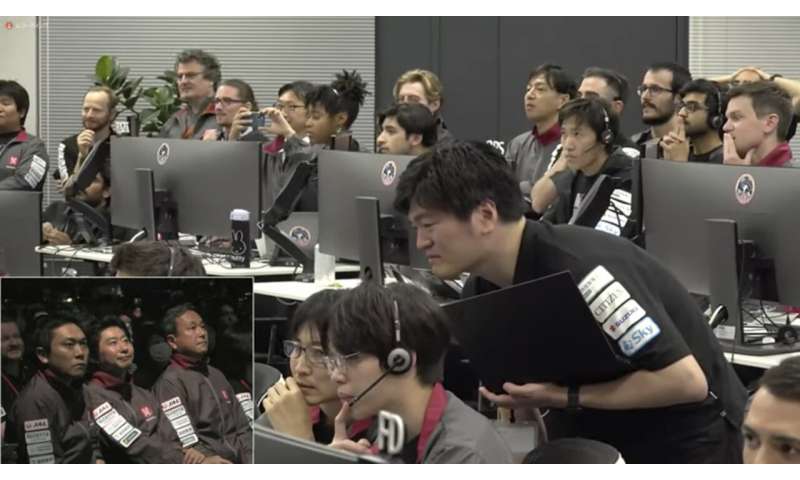A private Japanese moon lander went into free-fall while trying to land on the lunar surface last month, company officials said Friday, blaming a software issue and a last-minute switch in the touchdown location.
The spacecraft belonging to the company ispace was originally supposed to land in a flat plain. But the target was changed to a crater before December’s launch. The crater’s steep sides apparently confused the onboard software, and the 7-foot (2-meter) spacecraft went into a free-fall from less than 3 miles (5 kilometers) up, slamming into the lunar surface.
The estimated speed at impact was more than 300 feet (100 meters) per second, said the company’s chief technology officer, Ryo Ujiie.
NASA’s Lunar Reconnaissance Orbiter photographed the crash site the next day as it flew overhead, revealing a field of debris as well as lunar soil hurled aside by the impact.
Computer simulations done in advance of the landing attempt did not incorporate the terrain of the new landing site, Ujiie said.
CEO and founder Takeshi Hakamada said the company is still on track to attempt another moon landing in 2024, and that all the lessons learned will be incorporated into the next try. A third landing attempt is planned for 2025.
-

In this image from video provided by ispace, flight controllers in Tokyo wait for a signal from the company’s Hakuto spacecraft after a landing attempt on the surface of the moon, early Wednesday, April 26, 2023. Inset image at bottom left shows Takeshi Hakamada, founder and CEO of the company, center. Credit: ispace via AP
-

This illustration provided by ispace in April 2023 depicts the Hakuto spacecraft on the surface of the moon with the Earth in the background. On Tuesday, April 25, 2023, flight controllers plan to direct the craft to descend from orbit and land on the moon’s surface. Credit: ispace via AP
If successful, ispace would have been the first private company to land a spacecraft on the moon. Only three governments have achieved that: Russia, the United States and China. An Israeli nonprofit tried in 2019, but its attempt also ended in a crash landing.
Named Hakuto, Japanese for white rabbit, the spacecraft and its experiments were insured, according to Hakamada. The United Arab Emirates had a mini lunar rover on board that was lost in the crash.
Two U.S. companies have lunar landers awaiting launch later this year from Cape Canaveral, in partnership with NASA.
© 2023 The Associated Press. All rights reserved. This material may not be published, broadcast, rewritten or redistributed without permission.
Citation:
Crash of private Japanese moon lander blamed on software, last-minute location switch (2023, May 26)
retrieved 28 May 2023
from https://phys.org/news/2023-05-private-japanese-moon-lander-blamed.html
This document is subject to copyright. Apart from any fair dealing for the purpose of private study or research, no
part may be reproduced without the written permission. The content is provided for information purposes only.

